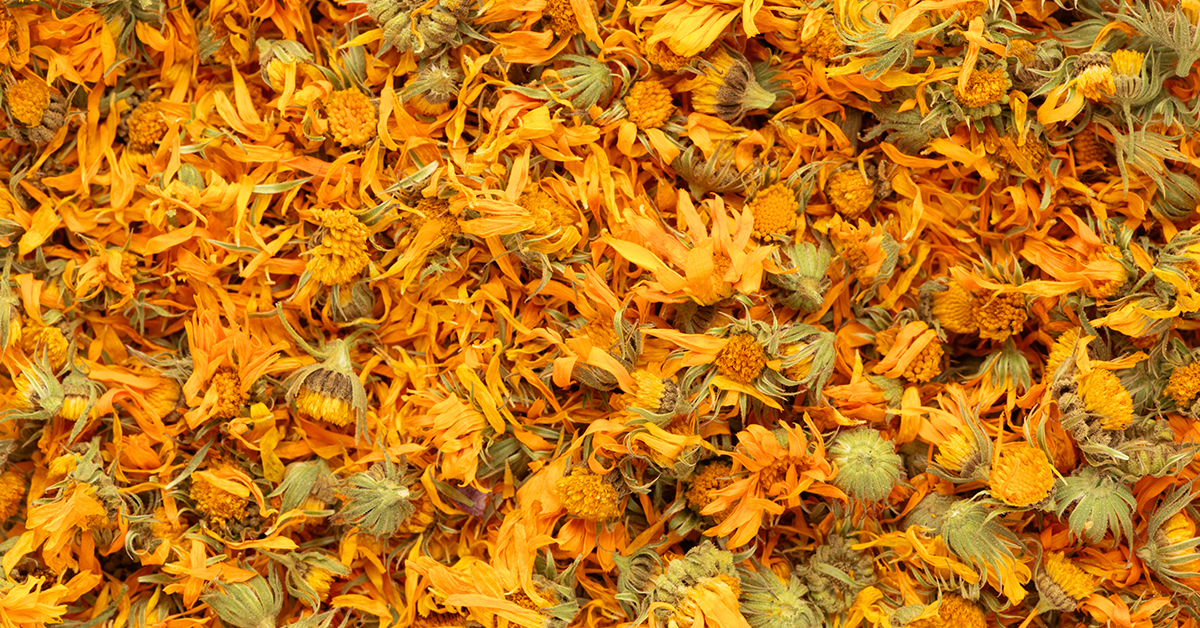In this monograph about calendula:
📖 Introduction | 🌱 Botanical Description | 📜 Traditional Uses | 🔍 Phytochemistry | ✨ Applications and Uses | 🛡️ Safety Profile
📖 Introduction
Calendula (Calendula officinalis) commonly known as marigold, is a revered herb in herbal medicine known for its vibrant yellow and orange flowers. Traditionally used for its healing, anti-inflammatory, and antimicrobial properties, calendula is a versatile herb employed in various therapeutic contexts, especially in skin care and wound healing.
| English Name | Calendula |
| Latin Name | Calendula officinalis |
| Parts Used | Flowers |
| Traditional Uses | Skin healing, reducing inflammation, wound care |
| Herbal Actions | Anti-inflammatory, antimicrobial, astringent, vulnerary |
🌱 Botanical Description
Scientific Classification
Calendula officinalis is part of the Asteraceae family.
Physical Characteristics
Calendula plants boast bright yellow to orange flowers with leaves that are slightly hairy and sticky to the touch.
Natural Habitat and Cultivation Details
Calendula is originally native to Southern Europe. It has been naturalized globally and thrives in well-drained, sunny environments. It is cultivated in gardens and farms for medicinal, culinary, and ornamental purposes.
📜 Traditional Uses
Calendula has been historically used to promote skin healing, reduce inflammation, and treat minor wounds, burns, and skin irritations. Its flowers have also been utilized in traditional practices to support digestive and immune health, demonstrating its broad application in herbal medicine.

🔍 Phytochemistry (Active Constituents)
Calendula’s medicinal efficacy is attributed to its rich phytochemical composition, including:
- Triterpenoids: Compounds primarily responsible for calendula’s anti-inflammatory and wound-healing effects.
- Flavonoids: Antioxidants that contribute to the herb’s protective and healing properties on the skin.
- Carotenoids: Pigments that give calendula its vibrant color, known for their antioxidant and skin-health-promoting effects.
✨ Applications and Uses
In herbal medicine, calendula is used for:
- Skin health: It is applied topically in creams, oils, and salves to accelerate wound healing, soothe skin irritations, and improve overall skin condition.
- Anti-inflammatory: Its extracts reduce inflammation in various conditions, including dermatitis, and support healing.
- Immune support: It is employed in teas and tinctures to enhance immune response, thanks to its antimicrobial and healing properties.
The efficacy of Calendula officinalis in these applications is supported by its diverse phytochemical content, underscoring its role as a valuable herbal remedy for skin health, inflammation reduction, and immune support.
🛡️ Safety Profile
Calendula is generally considered safe for most people when used externally and in moderate amounts internally.
Rarely, it may cause allergic reactions in individuals sensitive to the Asteraceae family.
Pregnant and breastfeeding women should consult with a healthcare provider before using calendula products, as its effects during pregnancy and lactation have not been thoroughly studied.
Individuals with pre-existing health conditions or those taking other medications should consult a healthcare professional before incorporating calendula into their regimen to ensure its safe use.
📃 Related Posts
🌱 Related Herbs

